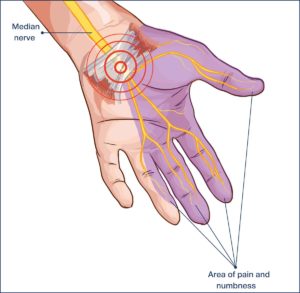
Triangular-Fibrocartilage Tear
Typical Symptoms
A tear to the Triangular-Fibrocartilage (TFC) can cause wrist swelling, limited movement and pain, particularly on loading. It can be localised to the joint and can limit function.

What causes it?
The TFC sits at wrist between the forearm and wrist bones. A tear could result from a previous trauma (fall onto the wrist), sudden change in load or repetitive pressure on the area. Sometimes with a large tear, there can be limitation to movement as well.
How can I help myself?
In the first instance, you should consider what activities brought on the symptoms and which ones continue to aggravate them; by trying to modify them or optimise your movements, it can help with your symptoms.
In situations where things are not improving, using a splint at night can be helpful to give the wrist a chance to recover.
When to seek help?
If your symptoms are persisting despite the splint, or if you are noticing a progression, with pain and limited movements, it is probably a good idea to be seen.
What are the treatment options?
Your clinician will assess you with a thorough history and examination. They may undertake an ultrasound to look for swelling around the wrist but for most, an MRI scan will be needed to determine if there is indeed a tear. Even if there is one, splinting and hand therapy are good starting points for treatment, followed by a cortisone or PRP injection to see if it helps symptoms. If it continues, then a surgical intervention might be more appropriate.








